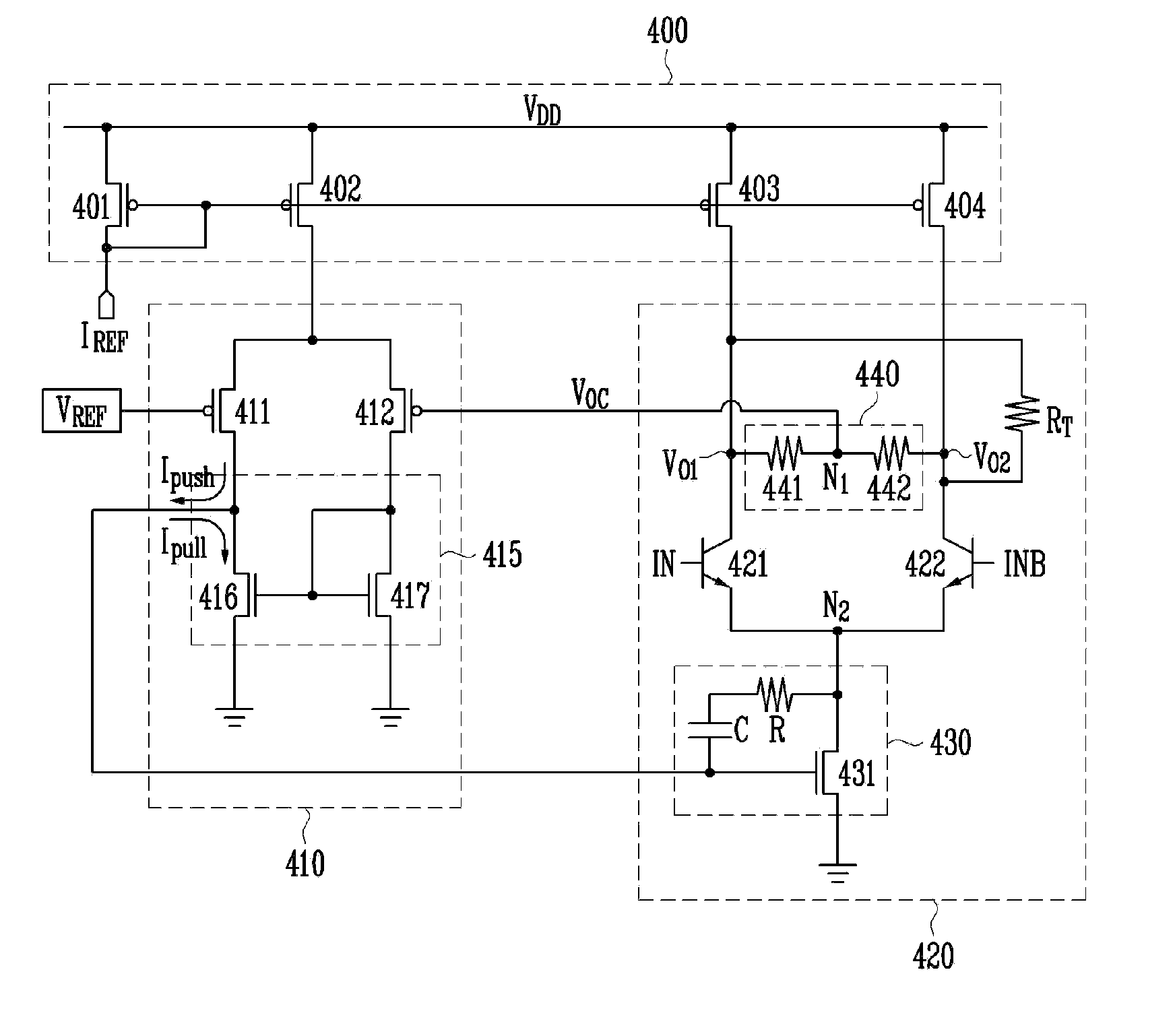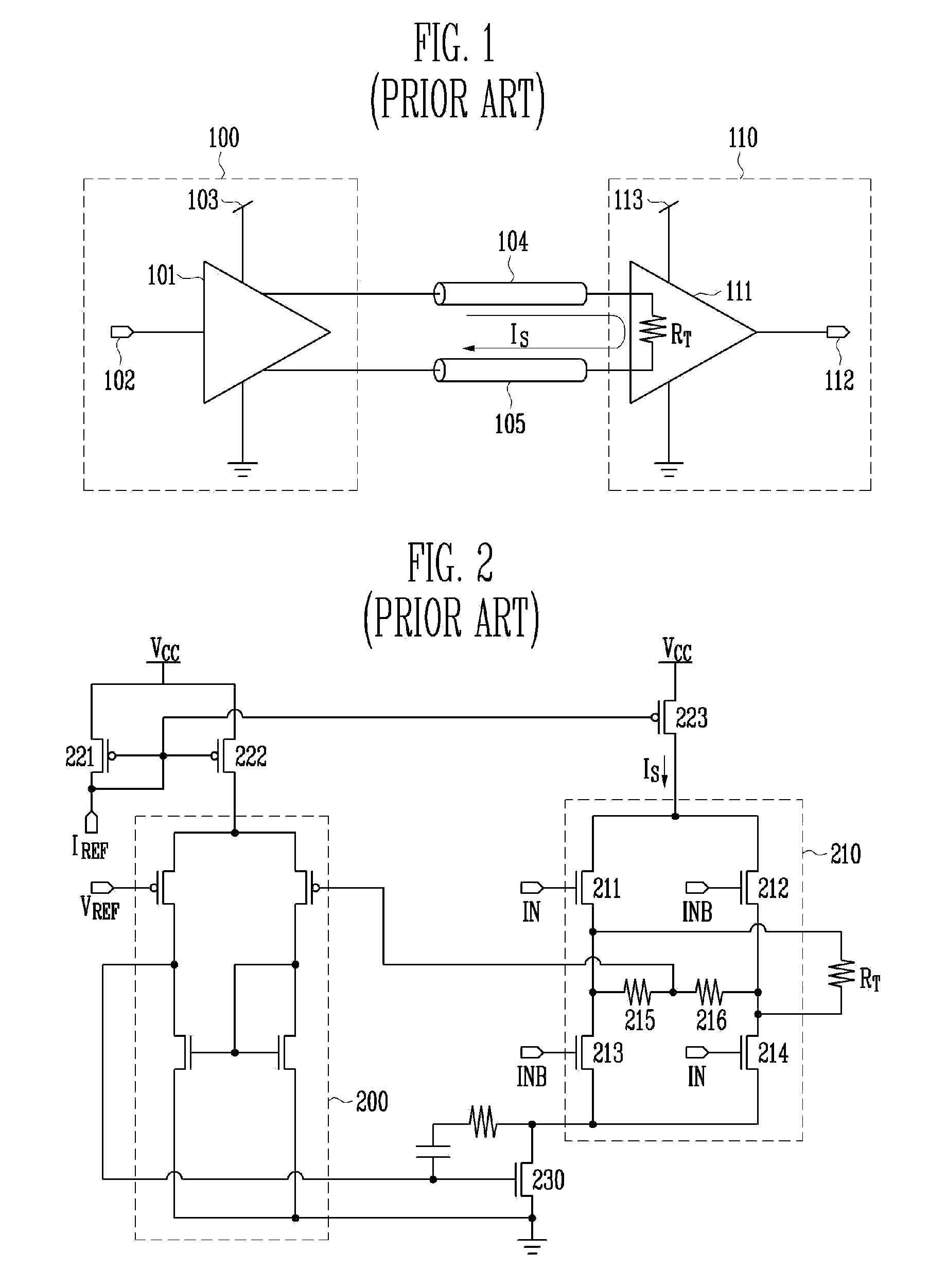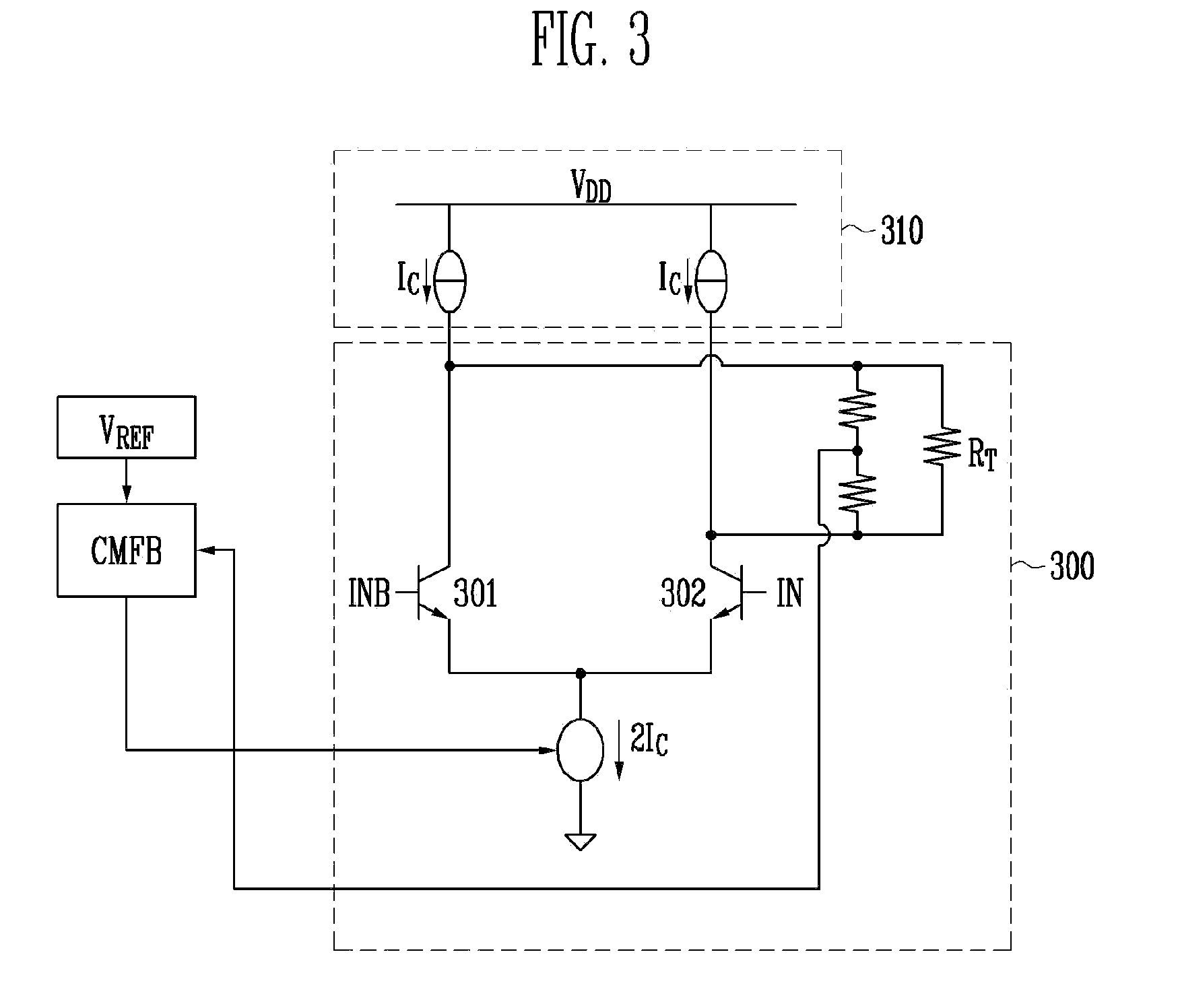Method of fabricating bipolar transistors and high-speed lvds driver with the bipolar transistors
a technology of bipolar transistors and drivers, applied in the direction of pulse generators, pulse techniques, digital transmission, etc., can solve the problems of voltage loss, insufficient static current use in i/o applications, and a ratio of width,
- Summary
- Abstract
- Description
- Claims
- Application Information
AI Technical Summary
Benefits of technology
Problems solved by technology
Method used
Image
Examples
Embodiment Construction
[0027]Hereinafter, exemplary embodiments of the present invention will be described in detail. However, the present invention is not limited to the embodiments disclosed below, but can be implemented in various forms. Therefore, the following embodiments are described in order for this disclosure to be complete and enabling to those of ordinary skill in the art.
[0028]FIG. 3 is a circuit diagram of a high-speed low-voltage differential signal (LVDS) driver according to an exemplary embodiment of the present invention.
[0029]Referring to FIG. 3, a current source circuit 310 for supplying current to a differential driving circuit 300 in a CMOS process is formed of double current sources (DCSs). In the differential driving circuit 300, the FETs used in the conventional driving circuit are replaced by bipolar transistors 301 and 302.
[0030]Owing to this structural feature, it is possible to minimize parasitic resistance regardless of a size of the device included in the differential-signal...
PUM
 Login to View More
Login to View More Abstract
Description
Claims
Application Information
 Login to View More
Login to View More - R&D
- Intellectual Property
- Life Sciences
- Materials
- Tech Scout
- Unparalleled Data Quality
- Higher Quality Content
- 60% Fewer Hallucinations
Browse by: Latest US Patents, China's latest patents, Technical Efficacy Thesaurus, Application Domain, Technology Topic, Popular Technical Reports.
© 2025 PatSnap. All rights reserved.Legal|Privacy policy|Modern Slavery Act Transparency Statement|Sitemap|About US| Contact US: help@patsnap.com



